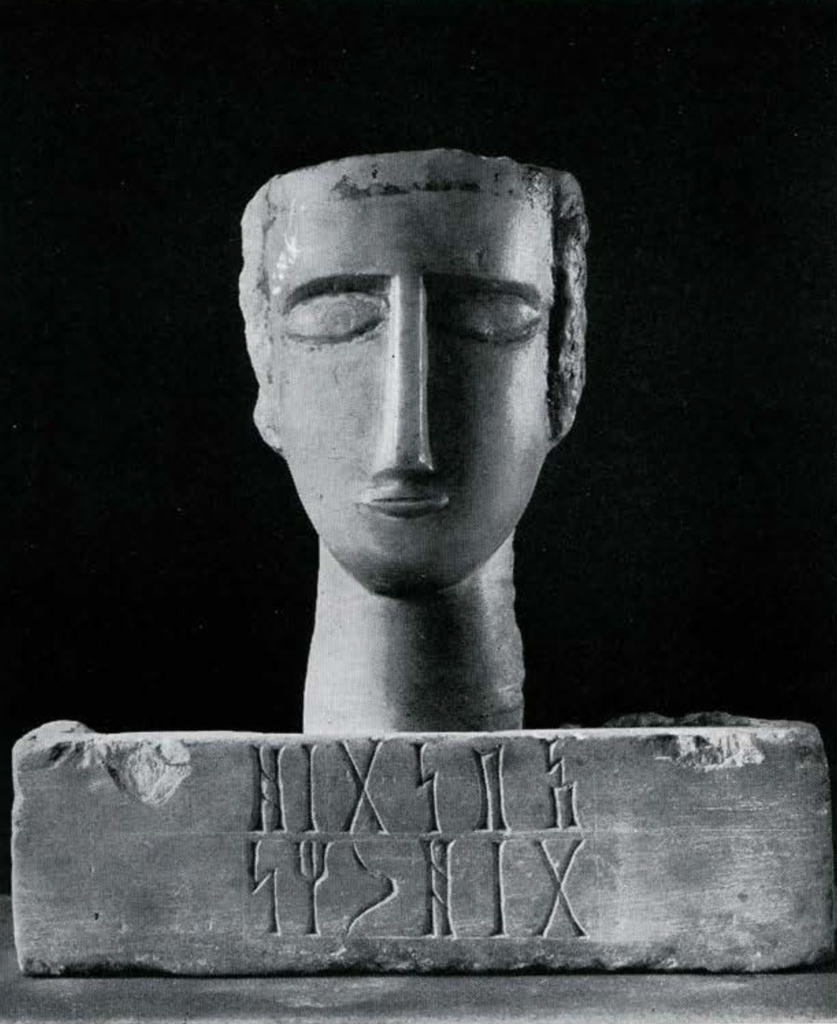
Museum Object Number: 30-47-17A / 30-47-17B
The land of Saba forms the southwest corner of Arabia on the Red Sea. There reigned long before Muhammed and about the beginning of the Christian era (150 B.C.-200 A.D.) the Himyarite princes. The hundred pieces of our collection have been recovered-not unlike the Palmyra busts and reliefs-through clandestine excavations in the highland beyond Aden. Through private collectors they found their way to our Museum. Many of them bear inscriptions in the Himyarite character (Figure 50). Most of them are statuettes or masks of men and women, also animals, in alabaster and copper; plinths and stelae with bas-reliefs and inscriptions; small altars and incense burners; basins, cosmetic boxes, jars, saucers, paterae, a lamp support in bronze; necklaces of semi-precious stones, in short, the usual grave furniture. They belong to the last period of the independent pagan period of Arabia before Islam. Language and script differ from the Hedjaz dialects and are closely connected with Hebrew and Ethiopian. The forms of art of that distant province of the Semitic world betray the mixed influence of Egypt, Greece and Rome, and also a strange affinity with the Sumerian art of Gudea. They even foretell the geometrical planes of the African image-carvers. From this land of Sheba, a tribute of gold, pearls, spices, precious stones and rare woods, was once paid to the kings of Assyria. Incense brought by the Arabs to King Darius was burnt by the Chaldaean priests on the altar of Bel at Babylon. The Queen of Sheba brought to Solomon one hundred and twenty talents of gold, together with spices and precious stones in great quantity. (cf. American Journal of Archaeology, Vol. XXXVIII, no. 3, 1934.)
* * *
Here we leave the visitor to himself. He may, before leaving the Babylonian Section, wonder at the Zodiac figures, the gods and goddesses of old and their strange emblems decorating the ceiling; he may derive some instruction from the two transparent maps. Past and present are linked by archaeology, which is the history of an ever-living humanity: “Haec olim meminisse juvabit.”

